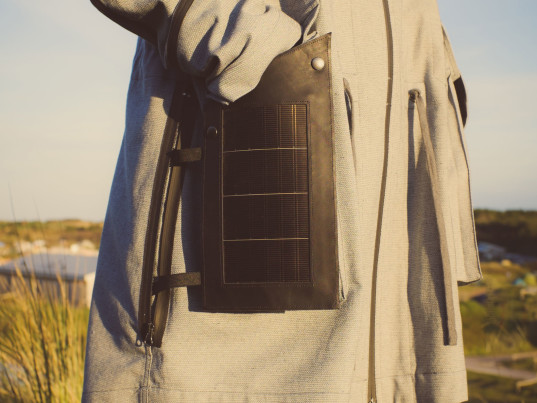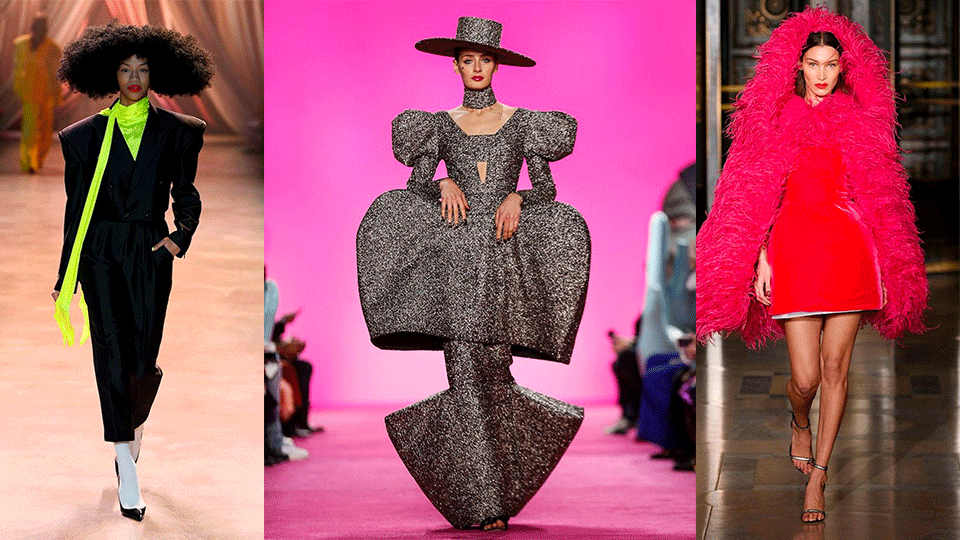- À New Wave to Fashion, À New Way of Living. Download Now on iOS Android Canada SS22
- hello@alahausse.ca
Wearable Solar energy: Providing Function in Fashion
The Upcoming market of Customizable Fashion for 21st century shoppers
August 14, 2021
Mi Terro: Reengineering Plastic in Fashion from Milk Fiber
August 14, 2021
Written by Dante
As we become more and more dependent on technology we are seeing tech advancements occur in all industries and fashion is no exception. The global value of the wearable technology market is 32.63 billion USD and it is projected to grow 15.3% by 2027. Fitness bands are still the leading product, accounting for more than 45% percent of the market revenue in 2019. Other advancements can be seen in the medical field such as the first wearable blood pressure monitor launched in 2019 by Omron Healthcare. Although body wear only accounts for about 10% percent of the tech market, it is forecasted to steadily increase and products like wearable solar energy are the reason why.

Solar Fashion
Wearable solar energy is a breakthrough in the tech/fashion industry. Nottingham Trent University in the UK are the lead innovators and their project is the creation of miniature functioning solar cells (think mini solar panels). The cells are waterproof and the garment can be safely washed. The textile is visually the same but would be embedded with the tiny cells which are too small to be seen or felt by the wearer. The cells can generate enough power to charge something like a Fitbit or a smartphone and it is considered to be an environmentally friendly way to do so.
The Stepping Stones of Solar Fashion
In 2014 Tommy Hilfiger launched a line of solar-paneled field jackets with the help of Pvilion a solar manufacturer. The jacket had waterproof solar panels lining the back of the coat which could be utilized through the built-in cable and USB port provided to charge devices. The design of the jacket is not without its flaws and we can see how much designs have improved in wearable solar tech in less than a decade. Solar accessories are more common, especially sunglasses (who would have thought?). The Self-Energy Converting Sunglasses designed by Hyun-Joong Kim and Kwang-Seok Jeong take advantage of the literal use of sunglasses and wearers can easily plug their devices straight into the glasses all while keeping their eyes protected.
The Environmental Impact
Of course there needs to be consideration of the creation of the garment and how environmentally friendly this process would be. Manufacturing solar panels is an energy intensive process and we have to question if the energy generated from the solar panels can offset the energy used in the creation process? Solar panels can produce emission-free energy for over twenty five years following their installation but this may not be the case with the mini cells. And additionally the disposal of the garment needs to be considered. Right now solar panels are recycled as e-waste but this may not be possible once there are textiles involved. Furthermore with a rise in solar panels we will need to adapt the recycling process to accommodate for the influx. The obvious benefit of solar energy is the reduced emissions in comparison to any other fossil fuel, primarily coal which produces “25x more carbon dioxide than solar energy to produce the same amount of energy” (Kuby Renewable Energy Ltd.).

The Cost of tech
When we think about it there really is no downfall to solar fashion. If we have these empty surfaces available to create energy then why wouldn’t we take advantage of it? Although the tech gadgets come off as trendy, they can often be costly for what seems like a small payoff. The Tommy jacket was selling for $599 and a fully charged jacket would be enough to charge your device four times. Beyond fashion, technology advancements are focused on extending the battery life of a device which could result in solar fashion being more appealing to the general public.
Is Solar fashion the Future?
We have only brushed the surface of solar fashion and mini solar cells are only the beginning. The advancements seen in the past ten years display the demand for wearable technology and its potential in the fashion industry. Follow us to cover more topics like this and see you soon on our Fashion Ecosystem.
Via ÀLA.HAUSSE‘s Multi-functional and Multi-purposeful Fashion Ecosystem- BUY/SELL/RENT/LEND/ (swap BETA 2021) mobile application, INDIVIDUALS & brands ( BETA 2021) are encouraged to REBUY, RESELL, REUSE and UP-CYCLE their personal “Clossets” aka Clothing Assets, along with overstock inventory and samples. Through this consumerism habit shift we indirectly slow down the urgency on fashion’s carbon footprint, aiding sustainability as a whole.
BETA Early Access Application Now Open for CA Fashion Lovers: Apply Now for LAST CALL
with Stories on www.alahausse.ca
#ALAHAUSSE #WEARYOURPURPOSE #HAUSSEPEOPLE
References:
- https://www.power-technology.com/features/wearable-energy-mini-solar-cells/
- https://www.cnet.com/news/tommy-hilfiger-launches-solar-power-jackets-to-charge-your-phone/
- https://www.fastcompany.com/90184002/solar-powered-sunglasses-to-power-your-gadgets
- https://www.grandviewresearch.com/industry-analysis/wearable-technology-market
- https://www.omronhealthcare.ca/blood-pressure/
https://kubyenergy.ca/blog/the-positive-and-negative-environmental-impacts-of-solar-panels







